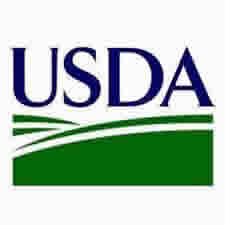 |
Annual Sugar Report for Nigeria - MY2016/17 |
Report Highlights:
Sugar production is expected to remain relatively flat at 70,000 tons, which signals limited progress of Nigeria’s backward integration plans for sugar production. Raw sugar imports are estimated to decline marginally by three percent, largely due to limited availability of foreign exchange used for food and agricultural imports.
Economic Overview
Foreign Exchange Access: Declining oil prices continue to restrain Nigeria’s revenues (in U.S. dollars), adding surmountable pressure on repaying its financial obligations. To help secure supplies of foreign currency, on June 23, 2015, President Buhari imposed a monetary policy to restrict foreign exchange access for 41 imported goods and services. Sugar is not among the food products affected by this import restriction. Importers report that they can obtain only 20 –30 percent of their foreign exchange demand from official sources; however, for the remaining 70 –80 percent, they rely on the high-cost parallel market. Foreign exchange is available at various rates: currently, the official GON rate is at about 200 Naira to 1 USD; and the parallel market rate fluctuates between 300 and 340 Naira to 1 USD.
(Note: Government sources note that foreign exchange is more readily available for improving infrastructural development and services.)
Security: The Boko Haram and migrant herdsmen insurgencies in the Northeast sugar consuming region have dislodged the population with majority settled in camps as internally displaced persons and are living on donated food items.
Slow Implementation of Agricultural Policies: Sources note that the new government has yet to provide funding support for sugar and other agricultural development policies.
Production
Domestic sugar production remains relatively flat at 70,000 tons (raw value). Sugar production is trending downward, mainly due to poor infrastructure, limited government support, and high-cost domestic production compared to imported brown sugar. Sources note that the average yield of refined sugar (per ton of sugar cane) continues tobe estimated at approximately 10 percent.
Nigeria’s three main sugar players are Flour Mills of Nigeria, BUA Group, and Dangote Group.However, Dangote Sugar remains the largest sugar producer with its 70 percent market share and continues to invest in its operations.
Policy:
The National Sugar Master Plan (NSMP) is a backward integration program with projections for the development of local sugarcane plantation and sugar production over a 10-year period. Sources note that the National Sugar Development Council Act was amended in June 2015 to further support the Nigeria Sugar Master Plan.The effectiveness of those amendments are still being monitored as the Government of Nigeria has reportedly not provided adequate funds to support to the development of Nigeria’s sugar industry.
Consumption:
Sources note that this year’s Nigeria per capita sugar consumption is currently estimated at 9.7 kilograms, which is drastically lower than the global average of 34 kilograms. Consumption is expected to drop slightly by three percent to 1.25 million tons. Nigeria’s sugar demand is growing partially due to Nigeria’s bottled soda industry; however, overall consumption is down by three percent because of lowering consumer purchasing power. Moreover, the Boko Haram and migrant herdsmen insurgencies in the Northeastern sugar consuming region have dislodged the population with majority settled in camps as internally displaced persons and are living on donated food items.
Trade:
Imports
Raw Sugar
OAA/Lagos anticipates that Nigeria’s raw sugar imports will decline marginally by three percent, largely due to challenges with obtaining foreign exchange. Sources note that Brazil is the largest raw sugar supplier to Nigeria, dominating over 75 percent of market share.
Refined Sugar Capacity
As previous reports noted, Nigeria’s sugar requirements are mainly met through imports of raw sugar that is refined locally. Annual sugar refining capacity remains at 2.9 million tons, exceeding national consumption demand of over 1.6 million tons per year.
For information on Nigeria’s sugar tariff structure, please review the following report: -
Exports
Similar to previous years, exports remain at 200,000 tons. Informal trade of refined sugar products remains consistent to neighboring West and Central African countries.
Stocks:
Declines in both supplies and consumption prompts Post to maintain its stock estimate at 100,000 tons
Enjoy this article? Feel free to share your comment, idea or opinion in the comment section
Related Articles

|
Finding Balance - Navigating Personal and Professional Goals!Finding balance between personal and professional goals can be a challenging task. We often find ourselves struggling to juggle our career aspirations with our personal lives. Many times, it seems like we have to sacrifice one for the other. However, this does not have to be the case.
One key asp [Read more]
|
Posted: A year ago |

|
Agricultural Biotechnology Annual Report for NigeriaReport Highlights: The Nigeria Senate passed the Biosafety Bill into law on June 1, 2011. However, one year after the President is yet to sign it into law. The law leans heavily on the precautionary approach and requires certification and mandatory labeling for imports of all products of biotechnolo [Read more]
|
Posted: 14 years ago |

|
Nigeria Introduces Levy on Wheat GrainReport Highlights: Effective July 20, 2012, the Government of Nigeria (GON) introduced a 15-percent levy on wheat grain imports resulting in an increase of the effective duty from 5 percent to 20 percent. The GON also introduced a 65-percent levy on wheat flour imports to increase the effective duty [Read more]
|
Posted: 14 years ago |


